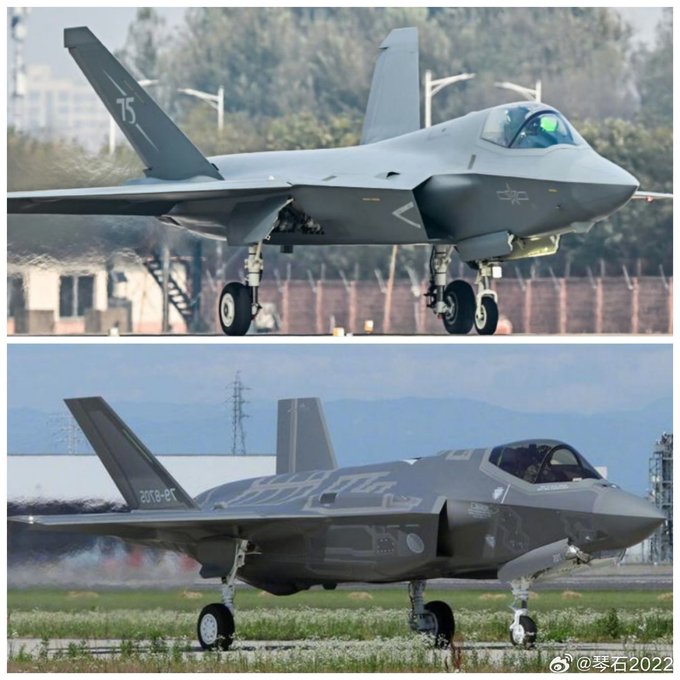Pakistan to Acquire 40 China-Made Shenyang J-35A Fifth-Generation Fighter Jets
Reports of Pakistan’s procurement of 40 J-35A fighter jets surfaced following a visit by top PLA General Zhang Youxia to Pakistan last month, during which he held private discussions with Pakistan’s Chief of Army Staff, General Asim Munir.
(DEFENCE SECURITY ASIA) – After months of media speculation, Pakistan is reportedly set to acquire 40 units of China’s fifth-generation fighter jet, the J-35A, with all aircraft expected to be delivered to Islamabad within two years.
This marks China’s first export of its domestically produced fifth-generation fighter jet to any country.
Reports of Pakistan’s procurement of 40 J-35A fighter jets surfaced following a visit by top PLA General Zhang Youxia to Pakistan last month, during which he held private discussions with Pakistan’s Chief of Army Staff, General Asim Munir.
Under President Xi Jinping’s leadership, General Zhang serves as Vice Chairman of the Central Military Commission (CMC), which oversees China’s armed forces.
The acquisition of the J-35A is expected to shift the balance of power between Pakistan and India, granting Islamabad significant air superiority over New Delhi, which continues to rely on fourth and 4.5-generation fighter jets such as the Su-30MKI and Rafale.
At the 2024 China Airshow in Zhuhai last November, China officially unveiled the first images of the J-35A.

The J-35A is China’s second fifth-generation fighter jet after the J-20 “Mighty Dragon,” which has not been exported due to the sensitive nature of its components and technology.
With the J-35A, China becomes the second country after the United States to develop two types of fifth-generation fighter jets – the J-35A and the J-20 “Mighty Dragon.”
Similarly, the United States possesses two distinct fifth-generation stealth fighters – the F-35 and the F-22 “Raptor.”
Earlier this year, the Pakistan Air Force (PAF) hinted at its intention to acquire the Shenyang J-35A, developed by Chinese aerospace firm Shenyang Aircraft Corporation.
PAF Chief of Air Staff, Air Marshal Zaheer Ahmed Baber Sidhu, reportedly stated that the J-35A would enter service with the air force “in the near future.”
“Negotiations are already underway for the acquisition of the J-35A, which will soon be part of the Pakistan Air Force,” he said.

Pakistani media reported that the country’s air force has already dispatched a group of pilots to China to train on the Shenyang J-35A, further signaling Pakistan’s commitment to acquiring fifth-generation fighter jets.
The J-35A, developed by Shenyang Aircraft Corporation, is a fifth-generation stealth fighter designed for air-to-air and air-to-ground operations.
This acquisition is also part of Pakistan’s broader efforts to replace aging aircraft such as the US-made F-16 and French-made Mirage 5, which are still in service with the PAF.
The addition of the J-35A to Pakistan’s air fleet will significantly bolster its aerial capabilities, complementing the country’s existing 4.5-generation fighters such as the J-10C and JF-17, developed in collaboration with China.
The procurement of the J-35A is expected to further strengthen defense ties between Islamabad and Beijing.

The Shenyang J-35A is China’s latest fifth-generation stealth multirole fighter jet, developed by Shenyang Aircraft Corporation (SAC). While official technical specifications remain limited, available information includes:
-
Design and Role: The J-35A is a twin-engine, all-weather stealth fighter designed for both air superiority and ground attack missions. It represents China’s second fifth-generation fighter after the J-20 “Mighty Dragon.”
-
Speed: Reports suggest the J-35A can achieve speeds up to Mach 2.0, surpassing the F-35’s top speed of Mach 1.6.
-
Engines: The aircraft is powered by two engines, enhancing its thrust and maneuverability.
-
Stealth Features: The J-35A incorporates advanced stealth technology, including a reduced radar cross-section and internal weapon bays, to minimize detectability.
-
Avionics and Sensors: It is equipped with modern avionics and sensor suites designed to enhance situational awareness and targeting capabilities.
-
Variants: There are two reported variants: a land-based version for the People’s Liberation Army Air Force (PLAAF) and a carrier-based version optimized for catapult-assisted takeoff for the People’s Liberation Army Naval Air Force (PLANAF).


